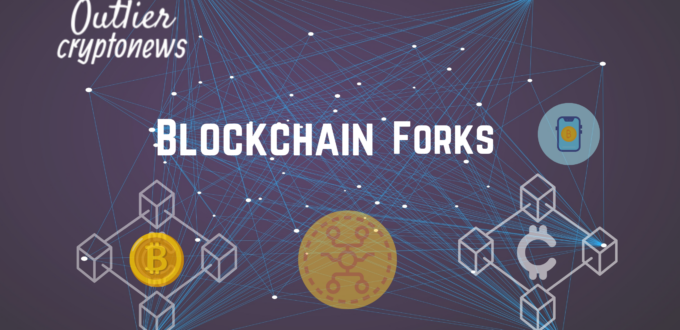Blockchain technology, the foundation of cryptocurrencies like Bitcoin and Ethereum, is renowned for its security and transparency. But within this seemingly unyielding structure lies a concept known as a “fork” – a point of divergence that can create ripples throughout the crypto landscape. Understanding blockchain forks is crucial for anyone navigating the ever-evolving world of digital assets.
What is a Blockchain Fork?
Imagine a blockchain as a public ledger, continuously recording transactions chronologically. A fork occurs when there is a fundamental change is proposed to the underlying software protocol governing the blockchain technology. This change can be due to various reasons, such as scaling limitations, security vulnerabilities, or philosophical disagreements within the developer community.
There are two main types of forks:
- Soft Fork: Soft fork is a backward-compatible change. Existing nodes (computers that validate transactions) continue to operate under the old rules while accepting transactions validated using the new rules. Think of it as adding a new lane to a highway – existing traffic can still use the old lane, but new vehicles can utilize the improved flow.
- Hard Fork: In contrast, a hard fork introduces a backward-incompatible change. This creates a permanent split in the blockchain, resulting in two separate versions with their own sets of rules. Nodes are forced to choose which chain to follow, leading to a potential divergence in value between the two new blockchains. Imagine the highway being completely rebuilt, rendering the old lanes unusable.
The Why Behind the Fork
Soft forks are generally used for minor upgrades or bug fixes. Since they maintain compatibility, they are typically adopted smoothly with minimal disruption. Hard forks, however, are more contentious. Here are some reasons why a hard fork might be implemented:
- Scaling Issues: As a blockchain gains popularity, the number of transactions it can process can become a bottleneck. Hard forks can introduce solutions like block size increases or new transaction validation methods to improve scalability.
- Security Vulnerabilities: If a critical security flaw is discovered in the blockchain protocol, a hard fork may be necessary to patch the vulnerability and prevent future attacks.
- Community Disagreements: Sometimes, the developer community may have differing visions for the future of a blockchain. A hard fork can allow each faction to pursue its path, resulting in two distinct blockchains. A famous example is the 2016 Ethereum hard fork that created Ethereum Classic in response to a hack on a decentralized application built on the Ethereum platform.
The Impact of Forks
The consequences of a fork can vary depending on the type and context. Mentioned below is a breakdown of some potential outcomes:
- Market Volatility: Hard forks can introduce uncertainty into the market, leading to price fluctuations for both the original and newly created tokens. Investors must carefully consider each chain’s potential value before making any decisions.
- Increased Innovation: Forks can also foster innovation. The creation of new blockchains with different functionalities can push the boundaries of blockchain technology and lead to the development of new applications.
- Network Security: Hard forks can temporarily weaken the security of a blockchain as nodes transition to the new protocol. Hackers may attempt to exploit this vulnerability during the transition period.
Navigating the Forked Road
For those interested in blockchain technology and cryptocurrencies, staying informed about potential forks is crucial. Here are some tips for navigating a forked scenario:
- Research the Reasons for the Fork: Understanding the motivations behind the fork and the proposed changes is essential.
- Evaluate the Potential Impact: Consider how the fork might impact the value of your existing holdings and the overall health of the blockchain ecosystem.
- Stay Updated with Community Discussions: Participating in community forums and following reliable news sources can provide valuable insights into the potential outcomes of the fork.
The Final Word
Blockchain forks are a complex phenomenon with far-reaching implications. Understanding them empowers individuals to participate more actively in the digital asset space. By staying well-informed and making calculated decisions, you can navigate the ever-changing technological landscape of blockchain technology with greater confidence.


No Comments Yet